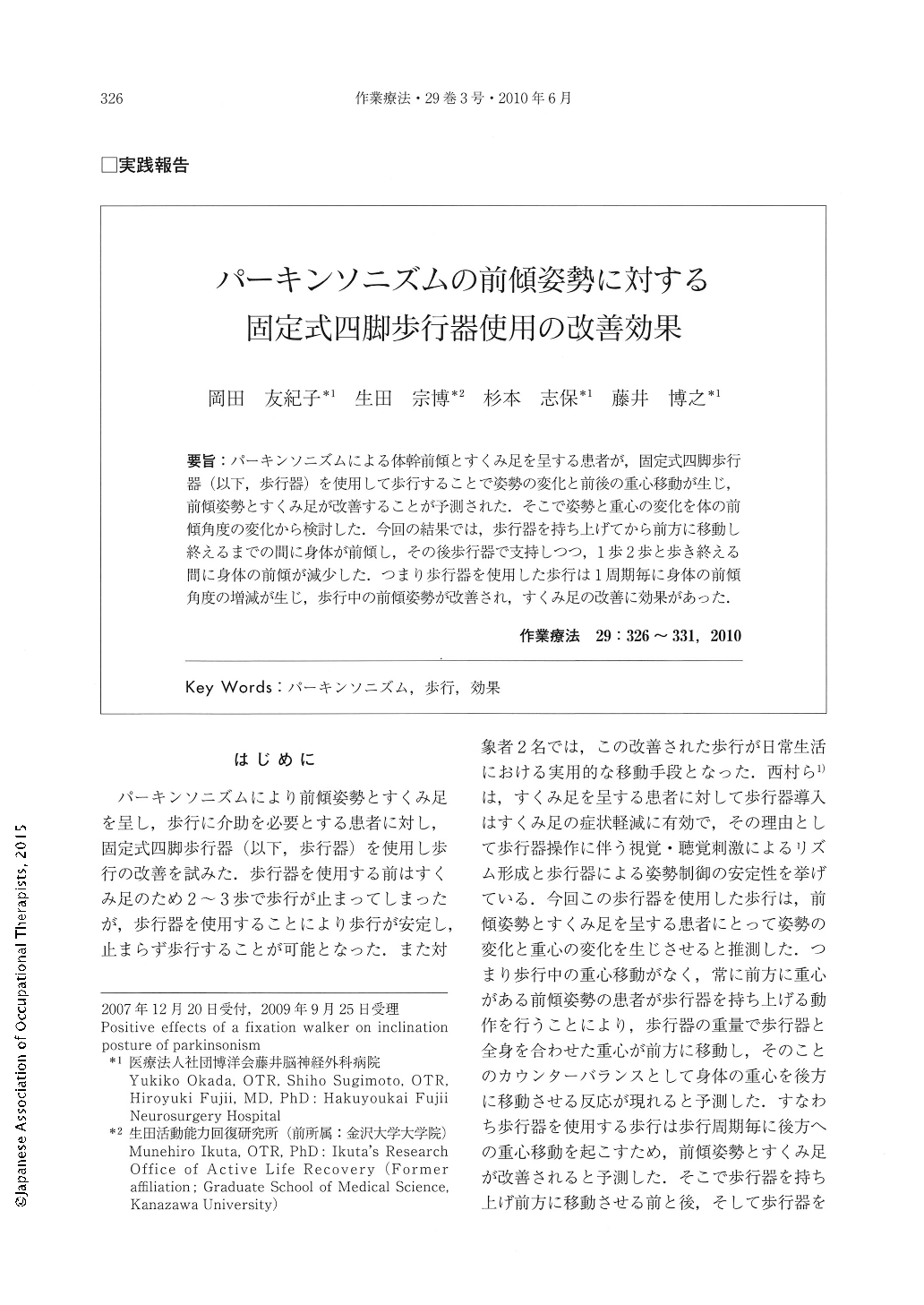Japanese
English
- 販売していません
- Abstract 文献概要
- 1ページ目 Look Inside
- 参考文献 Reference
要旨:パーキンソニズムによる体幹前傾とすくみ足を呈する患者が,固定式四脚歩行器(以下,歩行器)を使用して歩行することで姿勢の変化と前後の重心移動が生じ,前傾姿勢とすくみ足が改善することが予測された.そこで姿勢と重心の変化を体の前傾角度の変化から検討した.今回の結果では,歩行器を持ち上げてから前方に移動し終えるまでの間に身体が前傾し,その後歩行器で支持しつつ,1歩2歩と歩き終える間に身体の前傾が減少した.つまり歩行器を使用した歩行は1周期毎に身体の前傾角度の増減が生じ,歩行中の前傾姿勢が改善され,すくみ足の改善に効果があった.
Four patients suffered from forward inclination of the trunk and freezing of gait due to Parkinsonism. To deal with these problems, we attempted to improve the patients' gait using a fixed fourlegged walker (hereinafter called the "walker"). The use of this device resulted in the alleviation of the freezing of the gait, and also stabilized the patient while walking. To evaluate the efficacy of this device in more detail, we divided the series of walking motions that occur when a walker is used into three phases, and analyzed the angle of forward trunk inclination during each phase. The analysis revealed that during the phase that includes lifting the walker and completing the forward progress of the walker, the patient's trunk is inclined forward, and that forward inclination decreases during the phase when the person takes one or two steps forward while holding the walker. This indicates that with this device, the trunk, normally tipped forward before the start of a step, is inclined relatively backward during the forward stepping process. Thus, using a walker helps to alleviate both forward trunk inclination and freezing of gait.

Copyright © 2010, Japanese Association of Occupational Therapists. All rights reserved.


